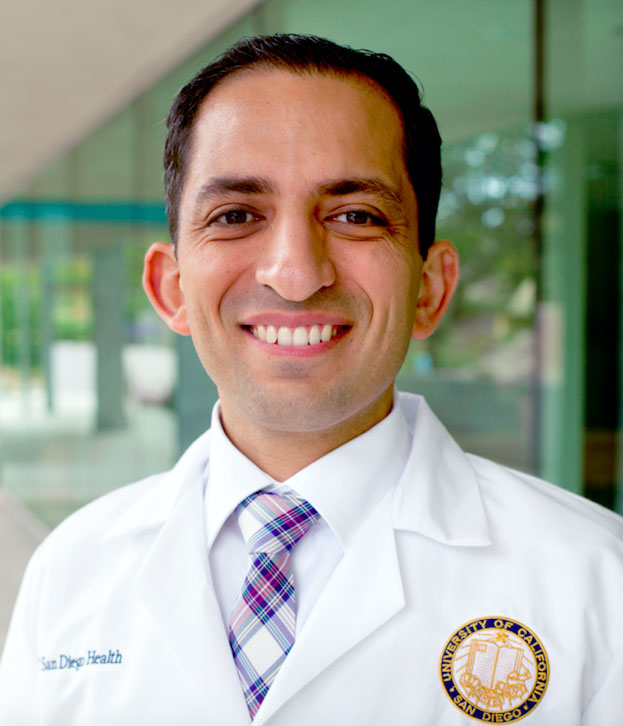Innovator Spotlight: Mathieu Bakhoum, UC San Diego Health
February 5, 2021
Mathieu Bakhoum is an Associate Physician of Ophthalmology at UC San Diego Health.
Highlighted Technology: Detecting cardiovascular disease using noninvasive imaging of the eye
Please explain your technology.
 Heart Disease and stroke are the leading cause of death worldwide. They are also very common, and much more so, in older individuals. Unfortunately, many individuals are unaware that they have an underlying cardiovascular disease until they are impacted by a catastrophic event such as a stroke, a heart attack or dementia. Fortunately, early detection can lead to lifestyle modifications and better medical and surgical management that can alter the course of the disease and reduce mortality.
Heart Disease and stroke are the leading cause of death worldwide. They are also very common, and much more so, in older individuals. Unfortunately, many individuals are unaware that they have an underlying cardiovascular disease until they are impacted by a catastrophic event such as a stroke, a heart attack or dementia. Fortunately, early detection can lead to lifestyle modifications and better medical and surgical management that can alter the course of the disease and reduce mortality.
"Fortunately, early detection can lead to lifestyle modifications and better medical and surgical management t hat can alter the course of the disease and reduce mortality."
There are many causes of cardiovascular disease. Hence, screening for cardiovascular disease in asymptomatic individuals using a myriad of diagnostic tests would be costly and challenging. The eyes are a window into our health, and many systemic diseases can manifest in the eye. Cardiovascular disease is no exception.
I am a physician scientist and a retina surgeon. In my clinical practice, I identified that ischemic lesions or ‘mini-strokes’ in the eye are present in individuals with cardiovascular disease.
What are the advantages of this technology over the current state-of-the art?
There are many advantages of this technology. These retinal ischemic perivascular lesions, or ‘RIPLs’, can be identified from standard optical coherence tomography (OCT) scans. The eye scan (or OCT) is non-invasive, does not involve any ionizing radiation and is already clinically approved. It can also be performed under two minutes. Our technology establishes the clinical utility of RIPLs in detecting cardiovascular disease. It also demonstrates a feasible and reproducible way to consistently identify RIPLs from regular OCT scans.
What is the next step to get this diagnostic test in the clinic?
Our test relies on OCT scans which are already in widespread use in eye clinics. Our technology aims to identify these lesions using a simple and methodical protocol. Our next goal is to demonstrate the utility of RIPLs in prospective studies, as a screening tool for the general population.